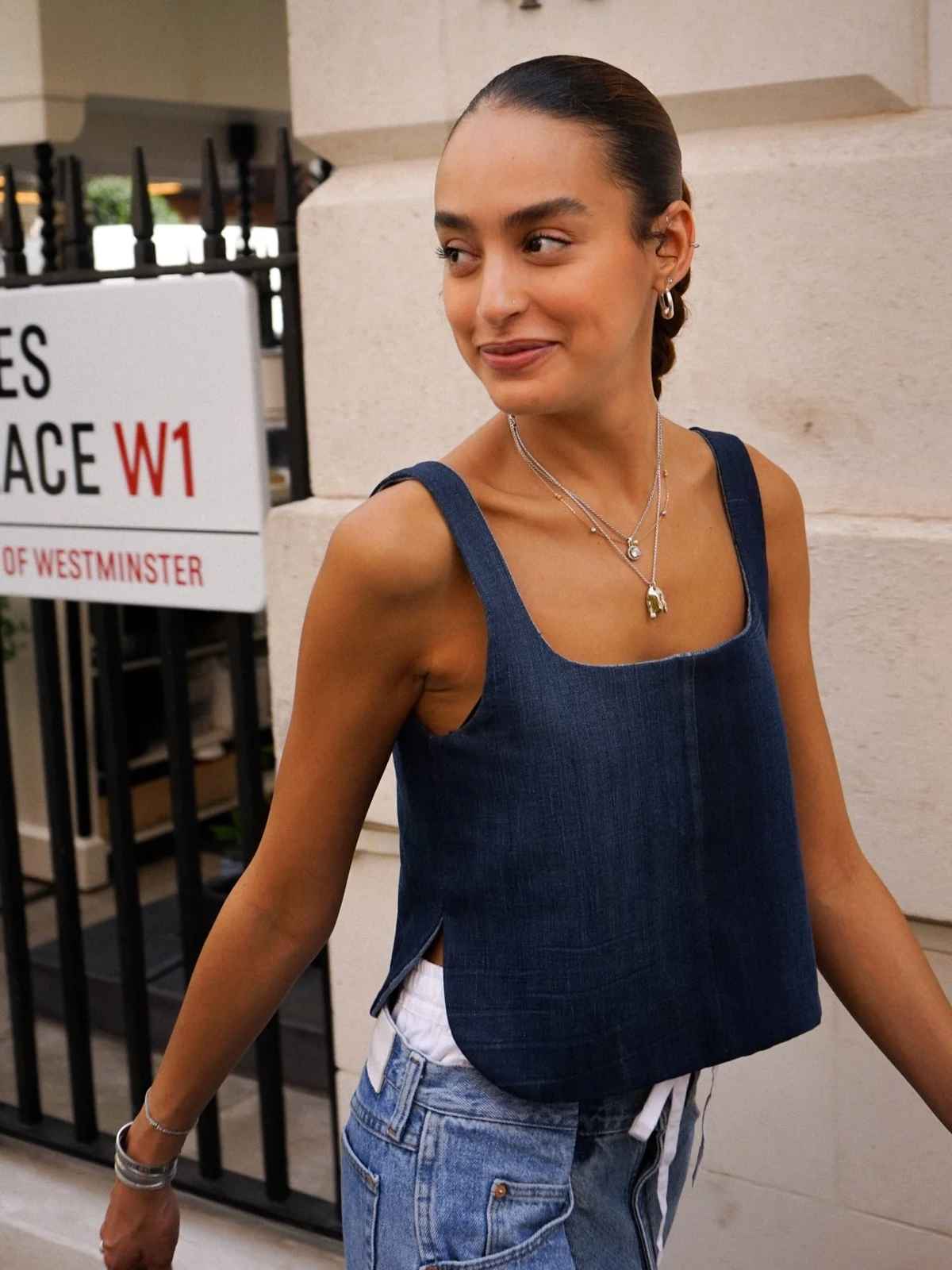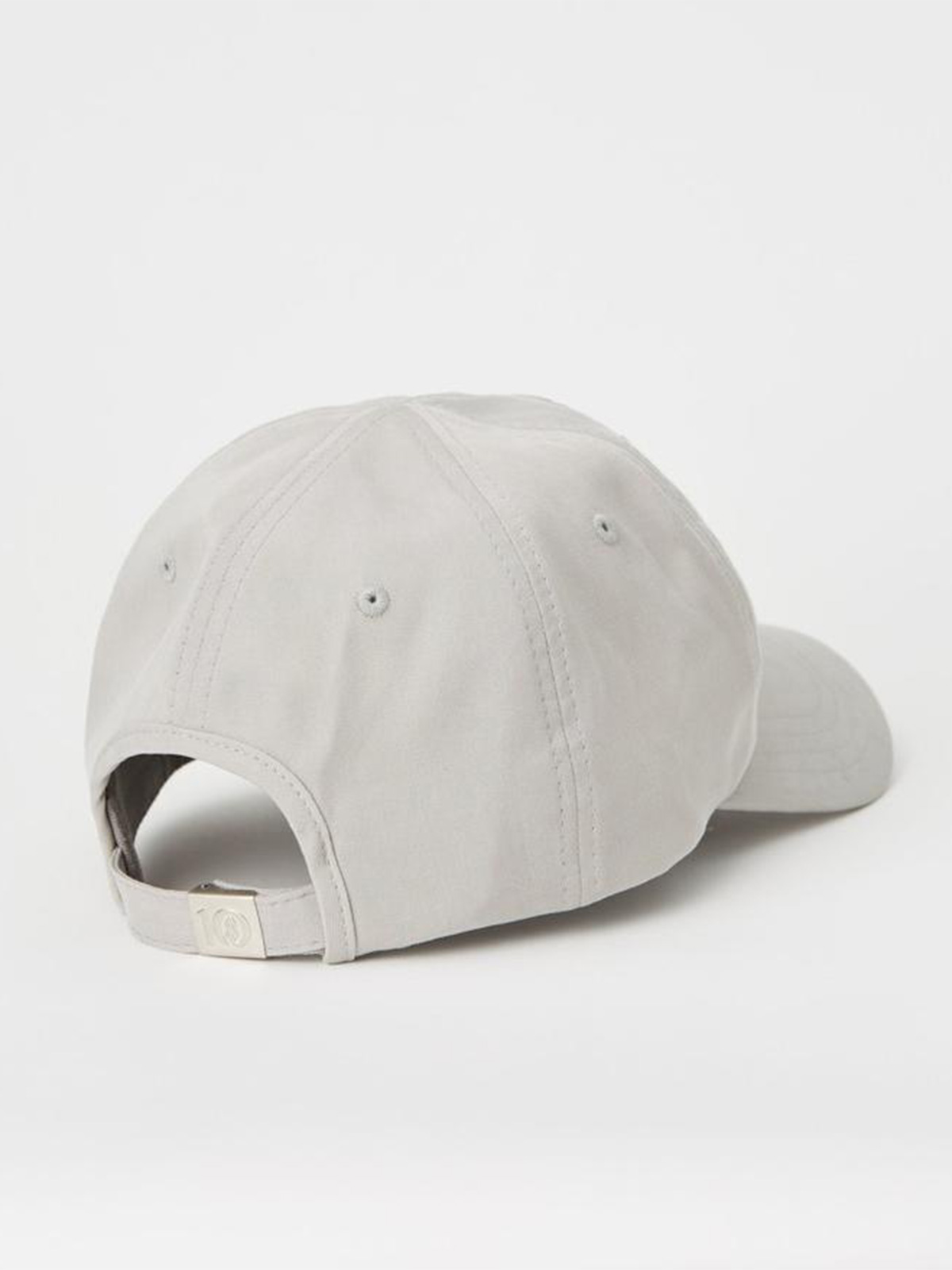The theme for Fashion Revolution Week this year is “Money Fashion Power”, so we’re diving into the systems that perpetuate fashion’s inequity. One keyword is “degrowth”, which a diverse movement claims fashion’s future relies on. It’s a heady concept that could become a feasible model. Here’s why many believe it’s the future we must choose.
Fashion’s negative impacts are getting worse
How do you solve a problem like fashion? The industry is only getting bigger and its sustainability performance is not catching up with the pace of growth.
Set to a backdrop this stark, it’s no surprise that an emerging number of super-engaged, eco-critical academics, activists, designers, and advocates are turning towards the ultimate alternative: rejecting mainstream economics in favour of something hopeful, complex, and to some, delusional.
The banner they fly is “degrowth”—a fascinating word, as it refers to a process, a calling, a framework, and a lifestyle all wrapped up into one.
For the diverse movement of people calling for degrowth, the motivation is simple: rich countries must balance their economies with planetary boundaries.
For many in the growth-focused fashion industry, the term creates discomfort by challenging establishment thinking. So much so, it might be hard to imagine the fashion industry choosing this route.
But as grassroots movements have shown us throughout history, degrowth could be our future if we choose it. And for the diverse movement of people calling for degrowth, the motivation is simple: rich countries must balance their economies with planetary boundaries. The survival of many people around the world already depends on it. And what fashion industry is there without people?
As an emerging sustainability topic for fashion, degrowth can feel like a heady concept rather than a feasible model. Few corporate-level case studies exist. So what does degrowth really mean? What could it look like? For answers, let’s take a look at the ideals behind degrowth and some of the glimmers of progress pushing for change in the industry.
What is degrowth all about? Transforming an unjust system
At a high level, degrowth refers to a voluntary reduction of growth in a democratic society. And degrowth is not specific to fashion alone.
This transformative process doesn’t come from an “outside” force like, for example, a recession. A recession isn’t degrowth because it’s a reactive contraction, rather than proactive, controlled shrinking.
In fashion, degrowth starts with a rejection of the fast fashion business model. That looks like decoupling the production of cheap garments from profitability. That looks like producing fewer garments that we keep for longer and repair instead of throwing them away.
That’s where you can begin to understand why degrowth sounds so radical and controversial: it calls for a full-scale reimagining of our economic system.
Degrowth isn’t new: the movement’s roots go deep
At its core, the ideas behind degrowth call for new strategies: degrowth is a framework that’s about transformation. It builds on the work of ecological and anti-colonial theorists. In this way, the concept of degrowth is closely linked with climate justice, Indigenous rights, and reparations for fashion’s extractive and neo-colonial production models.
As a movement, degrowth is often said to have emerged in France in the 1970s. But that’s not the full story. Non-Eurocentric communities around the world have operated according to degrowth’s ambitions for millennia—proving that our minds create our worlds, not our markets.
Communities around the world have operated according to degrowth’s ambitions for millennia.
Degrowth addresses the contradictions at play within “sustainable fashion”. From our values-based shopping choices through to our brand alignments, it is both compelling and painful to address this industry’s deeply exploitative history.
“Current environmental crises are a result of the societal crisis of inequality” argues Marula Tsagkari, Degrowth PhD candidate at The Autonomous University of Barcelona. She’s also a member of Research & Degrowth, an academic collective dedicated to research and awareness-raising.
New data underscores the urgent need to act now
The global context and system that fashion’s production and consumption operate in make degrowth a radical framework for transformation. One of the movement’s key calls is for rich countries to stop focusing on GDP (gross domestic product) growth as a primary objective and to organise their economies instead around supporting human wellbeing and reducing inequality.
Ground-breaking new data is beginning to reveal the extent of this unequal exchange, highlighting the ecological debt of rich nations in the so-called “Global North” and what they owe the rest of the world.
We have mishandled our relationship with nature because only a small percentage of the population decides on how we deal with it.
The evidence-based research, led by Prof Jason Hickel of the Institute of Environmental Science and Technology (ICTA-UAB), assigns responsibility for damage caused by 160 countries in the past 50 years, demonstrating which regions are behind the vast majority of global ecological damage. It finds that the US is the biggest culprit, accounting for 27% of the world’s excess material use, followed by the EU at 25% (which included the UK during the analysis period).
While this research is not specific to fashion, it’s poignant to see that these polluting regions house the headquarters of many of the world’s powerful global fashion brands. Aside from ecological impact, the social struggles of workers in fashion’s commodity chain expose the inequity driving commercial success for corporations.
Don’t let the terminology distract you from the problem
Like any alternative argument, degrowth is regularly met with mainstream resistance. Despite the tremors of excitement around degrowth among advocates for sustainability, big brands haven’t been great at giving us examples of it in action.
Why, when degrowth offers so much opportunity to resolve climate and human justice issues at scale, is the topic so rarely addressed?
Immediately, we can reference the economic system that fashion operates in that prioritises the accumulation of capital over the wellbeing of people. Market logic is currently at odds with degrowth theory. However, the terminology used is another barrier set in the way between theory and practical adoption.
To engage with degrowth, a high level of political literacy is required. That’s something that turns off many individuals and fashion brands alike. Yes, degrowth—like the problems it aims to solve—is an inherently complex model for the future. It can be time-consuming to understand and apply.
Why is that, when degrowth offers so much opportunity to resolve climate and human justice issues at scale, is the topic so rarely addressed?
Some of the tangible, interdisciplinary actions that take place in degrowth strategies include economic modelling, civic scenario planning, environmental justice lobbying, teaching and communications, care work, industry-level systems design, grassroots activism and so much more—all contributing to and occurring under new policy conditions.
In addition, the language of degrowth is subject to interpretation and not always that accessible. When we hear the word “growth”, many of us have been conditioned to immediately associate it with goodness. That poses messaging challenges for the degrowth movement, as we make the case for moving to economic models that respect planetary boundaries.
When the movement was emerging, “degrowth” was chosen intentionally and provocatively as a “missile word” (when used, it creates disruption and reaction) to foster debate. Some thought leaders, including the esteemed economist Kate Raworth, author of “Donut Economics”, argue that the missile tends to backfire: “throw it into a conversation and it causes widespread confusion and mistaken assumptions”.
Degrowth ideas sometimes go by other names, too. “Post-growth”, “Altgrowth”, “Donut Economics”, “the Wellbeing Economy”—there are a constellation of terms and intersectional approaches, which could be why this topic is so vulnerable to its language being co-opted.
Degrowth calls for creativity and collective imagination
Despite these challenges, seeds of degrowth are quietly being planted. An invigorating mass of small and independent brands, which aren’t constrained by public ownership, are rejecting corporate operations in favour of slower, localised, and intentional fashion production. They’re reconfiguring what is meant by the word “success” as they go. There’s so much creative potential when the pressure to exponentially expand as a company isn’t central. That can look like working on small-scale, custom tailoring; upcycle-only operations; renewal and repair offerings, as well as simply limiting the range of available products to prioritise more modular/capsule dressing systems.
In addition to the degrowth values of designers and brands, new services are emerging across the market to support degrowth’s focus on less. In the UK, The Restory is an aftercare service that’s gained a massive social media following for its luxury repair videos. Meanwhile, in the US, newcomer Lotte offers a remote sustainability styling service focused on your relationship with the clothes you already own.
These attitudes are showing up in high-level industry guidance, too. In an effort to shift the narrative, the UN Environment Programme (UNEP) created a high-level commitment included in the renewed Fashion Industry Charter for Climate Action—sharing recommendations for fashion communicators to align with the Paris Agreement goals.
There’s so much creative potential when the pressure to exponentially expand isn’t central.
It’s a necessary tactic for progress, when, according to Good On You, only 6% of large brands have a science-based greenhouse gas emissions target. Promoting lifestyle changes that help limit global temperature rise is central within the UNEP recommendation, ranging from “spotlighting new role models and notions of aspiration or success” right through to “celebrating the ecological, cultural, and social values of the industry”. Such recommendations align closely with degrowth strategy frameworks and could be integrated into policy that supports wellbeing over wealth.
Elsewhere, fashion is betting on the impact of circular business models as a way to decouple revenue streams from production and resource use. According to the Ellen McArthur Foundation, clothing production doubled between 2000 and 2015 while during the same period, utilisation of those clothes decreased by 36%.
We’re creating more clothes and wearing them less, underscoring the simple call to make less stuff.
In 2021, the British Fashion Council’s Institute of Positive Fashion addressed the impact of the fashion industry. Their top key target outcome? Reduce the volume of new physical clothing.
Encouraging fashion brand stakeholders to reduce consumer demand for new physical goods doesn’t make sense within the current market logic. Yet here we are. Degrowth may be complex, but it’s far from illogical.
The future of fashion can’t centre on consumption
Tackling the dominance of growth is a profound economic question that cuts to the very core of our planetary crisis.
“We don’t want a world where fashion does not exist at all. We want a world where fashion is not overconsumption but freedom of expression”, Tsagkari says. “Imagining this new idea of fashion as something creative but also simple and accessible to everyone can be a great challenge.”
But it can also be fun.
We don’t want a world where fashion does not exist at all. We want a world where fashion is not overconsumption but freedom of expression.
The best way to understand degrowth theory is to try and live out some of the movement’s values. After all, degrowth isn’t just about the economy. It’s about culture. For example, you might try swapping or trading your future fashion rather than focusing on its currency cost. You’ll notice how such small shifts can change your own experiences with clothes.
If our personal values systems are capable of shifting, then maybe our market is, too.
Owing to fashion’s unmatched ability to reflect and influence culture at large, perhaps this industry is well-positioned to move society towards degrowth. It could be the future we choose.



















